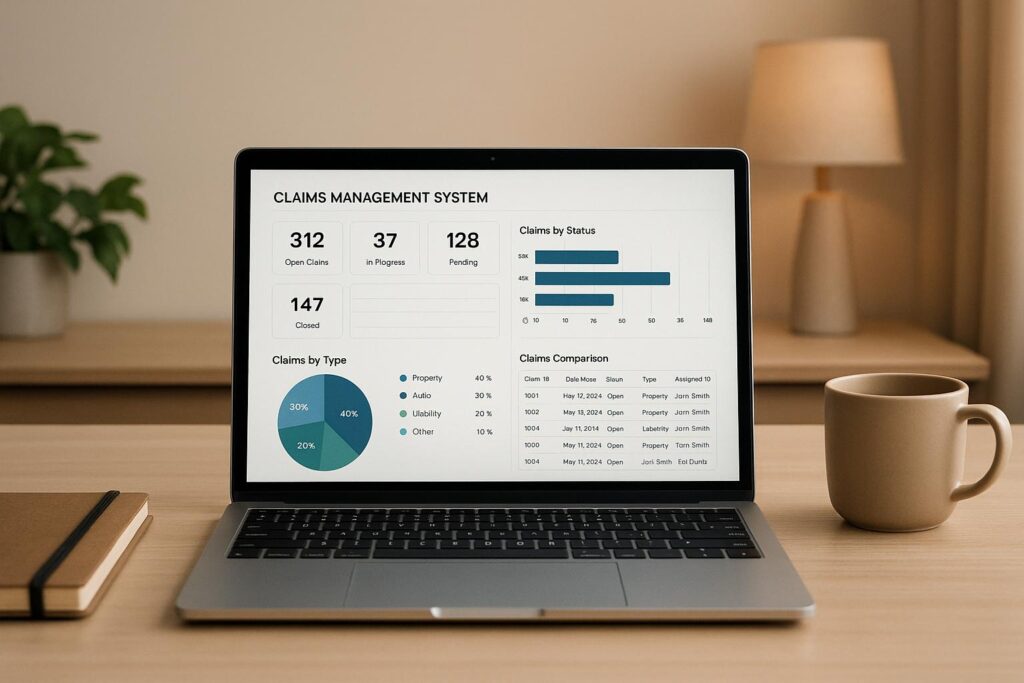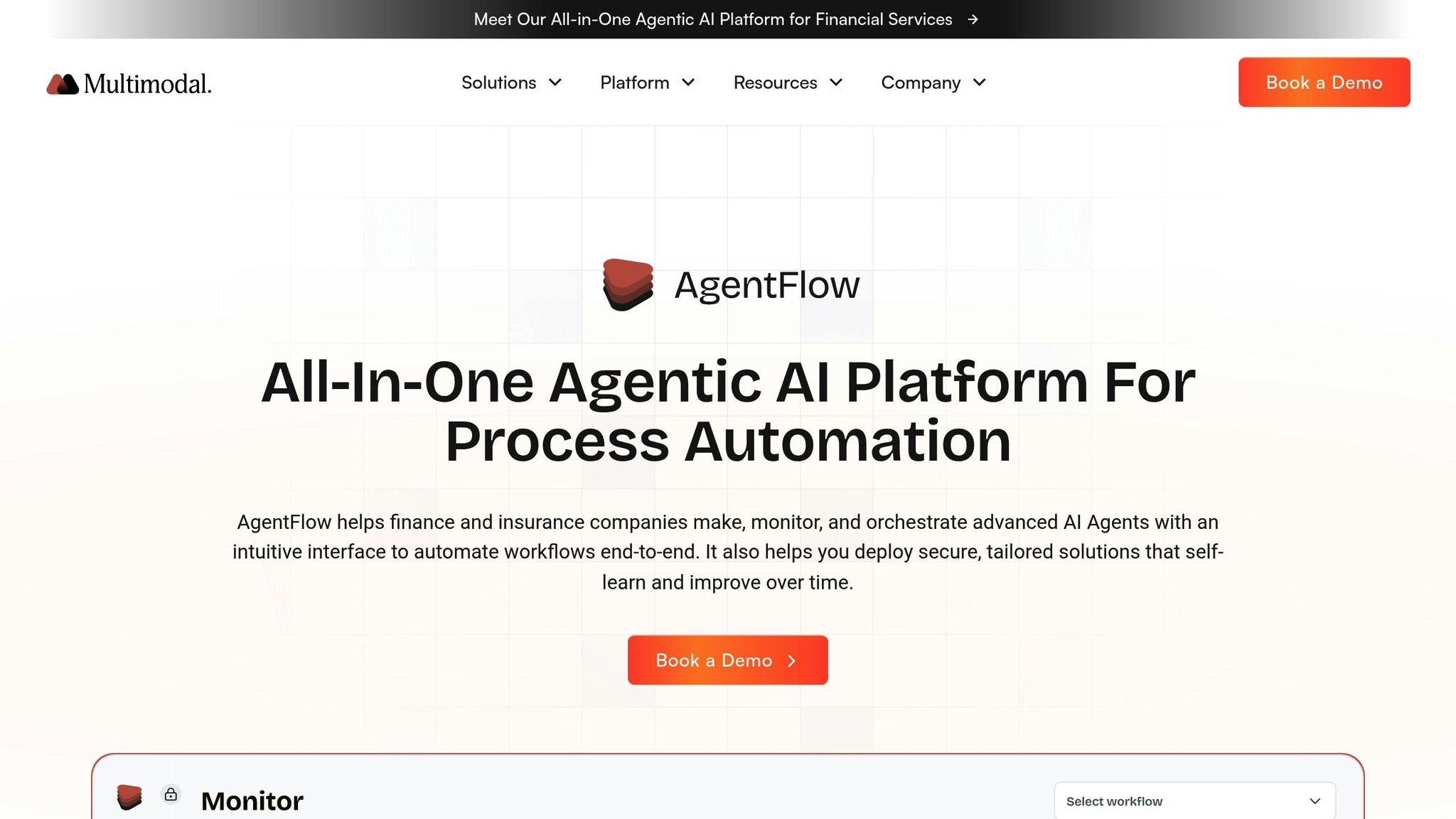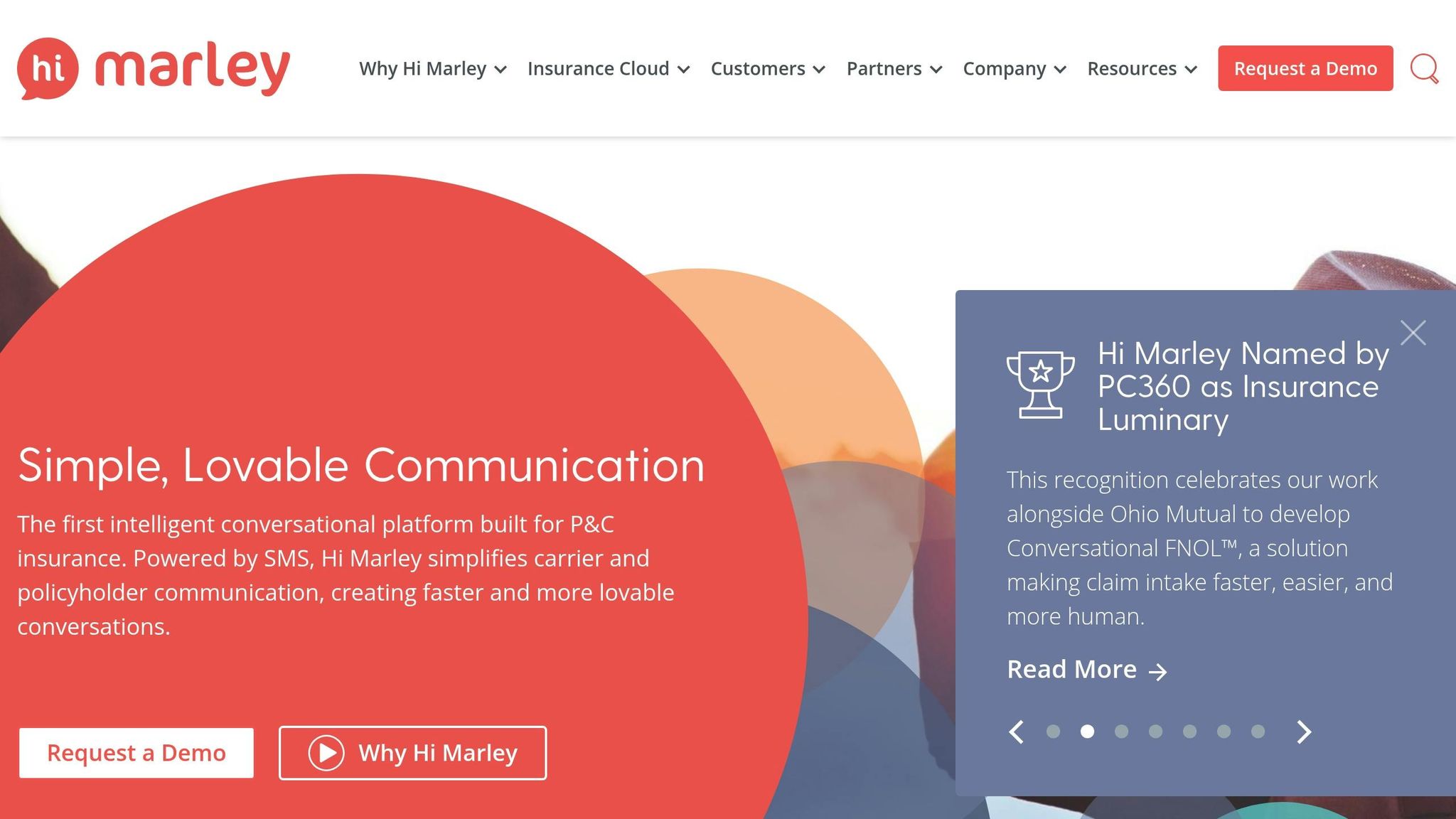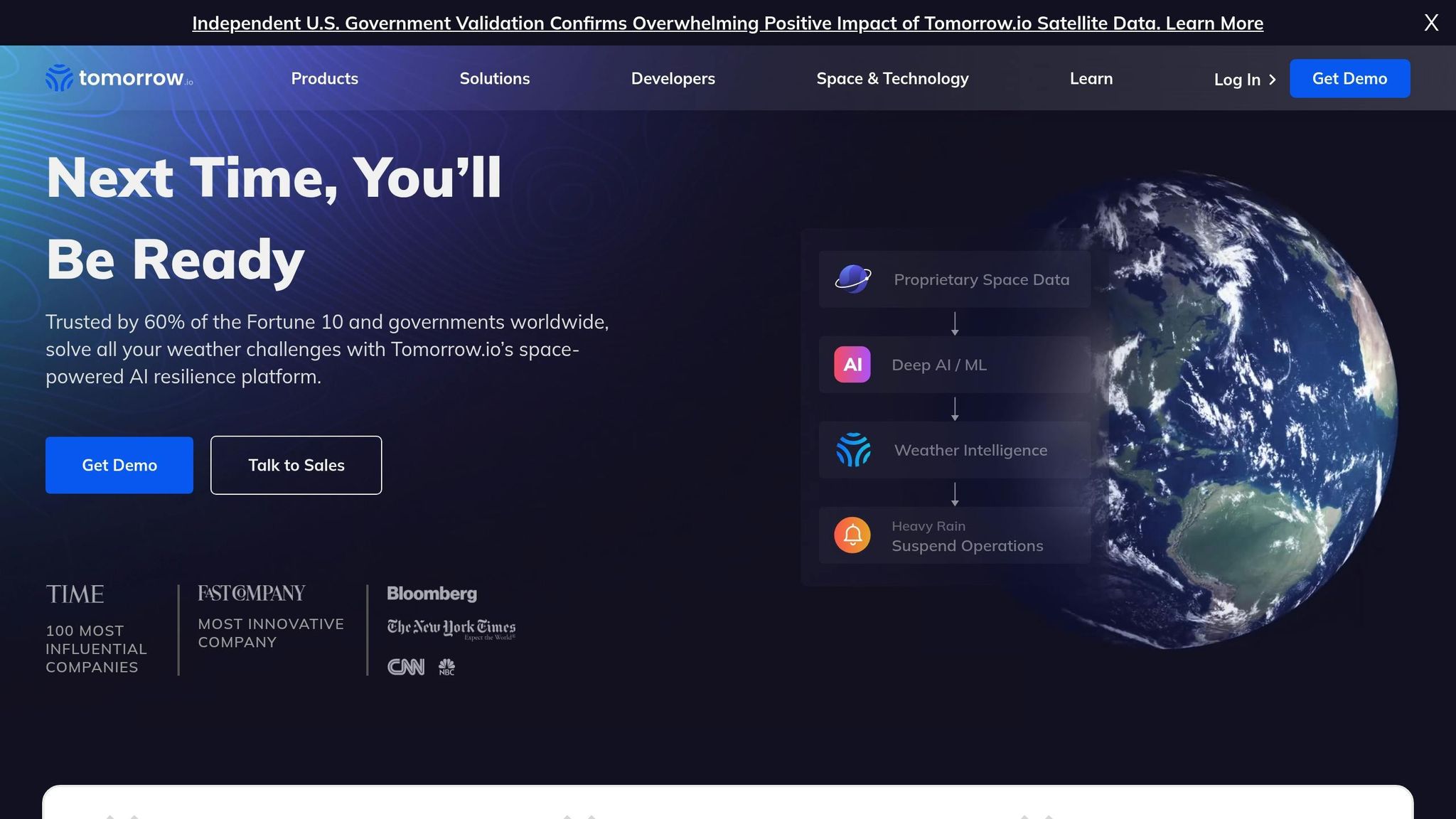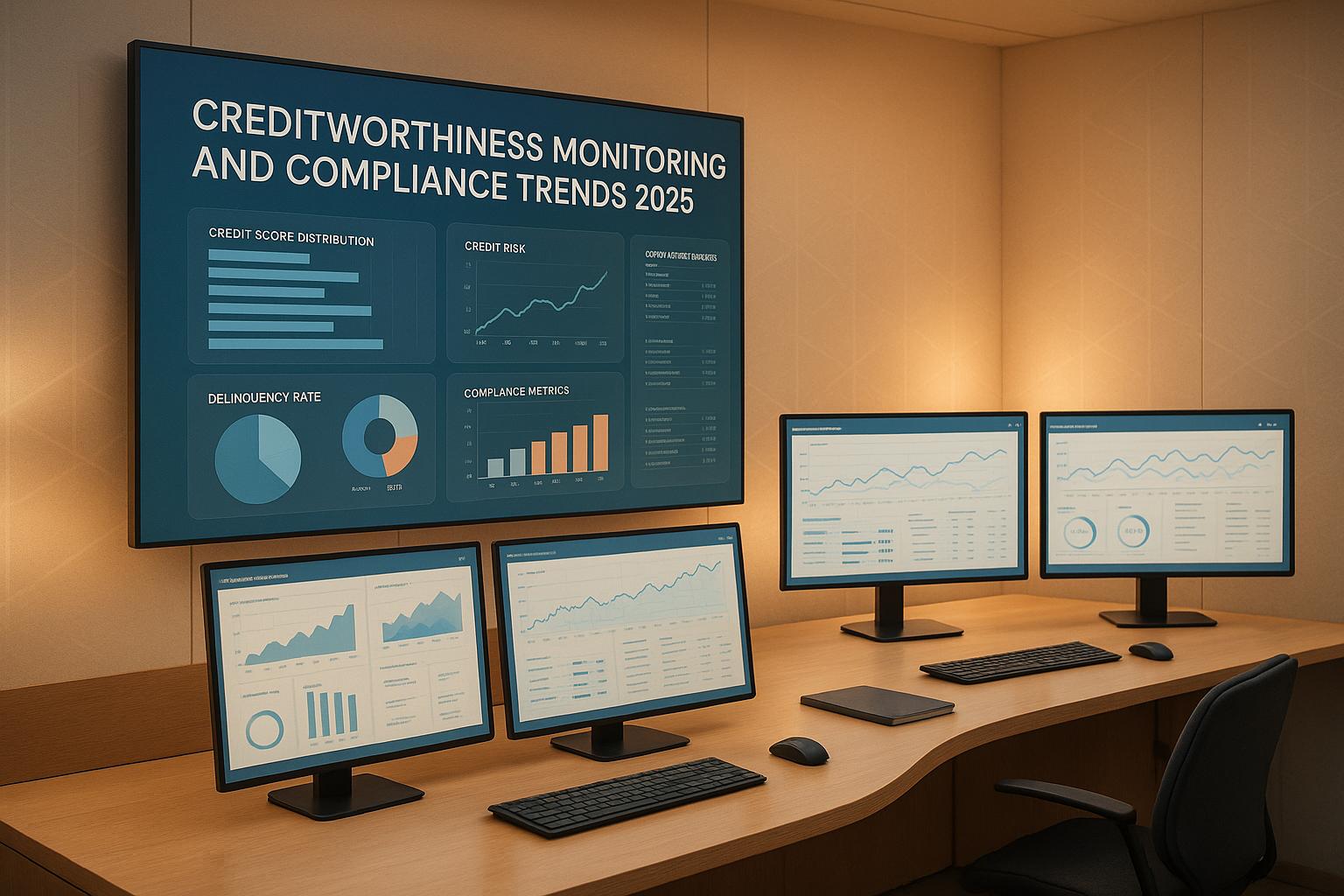Claims management systems simplify the claims process for businesses, especially in trade credit insurance. They reduce delays, automate tasks, centralize documentation, and provide real-time updates. However, not all systems are suitable for trade credit insurance, which requires tools for financial analysis, credit monitoring, and payment tracking.
Here’s a quick overview of four platforms:
- AgentFlow: Limited public information on its claims management capabilities for trade credit insurance. Contact vendor for details.
- Tractable: Focused on auto/property damage assessment using AI. Not suited for financial claims.
- Hi Marley: Excels in customer communication via messaging but lacks tools for trade credit insurance.
- Tomorrow.io: A weather intelligence platform with no claims management features.
Quick Comparison
| System | Strength | Limitation | Pricing | Trade Credit Insurance Fit |
|---|---|---|---|---|
| AgentFlow | Workflow automation | Lacks financial tools | Custom pricing | Limited |
| Tractable | AI visual damage assessment | No financial claims tools | Custom pricing | Poor |
| Hi Marley | SMS-based communication | No financial analysis features | Subscription | Poor |
| Tomorrow.io | Weather intelligence | No claims management functionality | Tiered pricing | Very poor |
None of these platforms fully meet the needs of trade credit insurance. Businesses should look for systems with advanced financial analysis and credit monitoring tools.
Demo Claims Management Control Center App
1. AgentFlow
There isn’t much publicly available information about AgentFlow’s claims management capabilities for trade credit insurance. To get a clearer picture of how the platform performs in this area, it’s best to reach out to the vendor directly for detailed insights.
Features and Limitations
Due to the lack of public details, it’s challenging to fully evaluate AgentFlow’s ability to handle claims management and workflow processes for trade credit insurance. If you’re considering this platform, it’s a good idea to connect with the vendor for further clarification. This will help you determine if it aligns with your specific needs and expectations. Additional research and discussions may be necessary to make an informed decision.
2. Tractable
Tractable is an AI-driven platform specializing in assessing auto and property damage for industries like insurance, repair, recycling, and fleet management. While it excels in visual damage evaluation for physical assets, its functionality doesn’t align well with the needs of trade credit insurance.
Features
The standout feature of Tractable is its computer vision technology, which processes images to evaluate damage and estimate repair costs. This makes it a strong tool for handling auto and property claims. However, trade credit insurance requires a different skill set – focused on financial analysis rather than physical damage assessment – making Tractable less effective in this domain.
Limitations
Tractable’s biggest limitation lies in its design. Built primarily for assessing physical damage, it lacks the tools needed for financial risk evaluation, credit analysis, or payment tracking. These gaps make it unsuitable for the nuanced requirements of trade credit insurance.
Pricing
Tractable’s pricing structure isn’t publicly available, meaning businesses need to contact the company directly for details. This lack of transparency can make budgeting difficult, especially for those in the trade credit insurance sector.
Suitability for Trade Credit Insurance
Given its focus on physical damage assessment and the absence of financial analysis tools, Tractable doesn’t meet the specific demands of trade credit insurance. Its strengths lie elsewhere, making it a better fit for industries dealing with tangible asset claims.
3. Hi Marley
Hi Marley is a customer engagement platform designed to streamline communication between insurers and their customers through text messaging. By offering a modern alternative to traditional phone calls, the platform provides a more convenient and efficient way to handle customer interactions.
Features
Hi Marley stands out with its intuitive messaging interface, which allows insurance companies to interact with customers via text messages, photos, and document sharing. Customers can easily submit claims information, upload photos of damage, and receive timely updates – all within a familiar messaging format.
The platform also includes automated workflows that guide users step-by-step through the claims process. This eliminates the need for drawn-out phone calls or navigating complex online forms. Insurance adjusters can review submitted materials, request additional information, and provide real-time updates directly within the messaging system.
Hi Marley’s document management features make it simple to share and organize photos and files during conversations. This streamlined approach helps claims handlers process information more quickly and efficiently. However, the platform does not support the intricate financial evaluations required for trade credit insurance.
Limitations
While Hi Marley excels in facilitating customer communication, it lacks the tools necessary for financial analysis. The platform does not include features like credit scoring, payment tracking, or integration with financial databases – key elements for managing trade credit insurance.
Its focus on visual damage documentation and conversational workflows makes it ideal for property and casualty claims but less effective for the document-intensive and analysis-driven needs of trade credit insurance. This emphasis on simplified communication leaves a gap in handling the financial complexities inherent to trade credit operations.
Pricing
Hi Marley uses a subscription-based pricing model, but specific pricing details are not publicly available. For a tailored quote, you’ll need to reach out to the company directly.
Suitability for Trade Credit Insurance
Hi Marley’s primary strength lies in enhancing customer communication, but this focus makes it unsuitable as a primary tool for trade credit insurance. Trade credit insurance demands advanced financial analysis, credit monitoring, and integration with business intelligence systems – features that Hi Marley does not provide.
The platform is designed to simplify traditional insurance claims that often involve physical damage or personal incidents. In contrast, trade credit insurance revolves around evaluating complex financial relationships, payment histories, and credit risk, which require specialized tools beyond messaging capabilities.
While Hi Marley could potentially serve as a supplementary communication tool, it lacks the functionality to manage the core processes of trade credit insurance effectively.
sbb-itb-2d170b0
4. Tomorrow.io
Tomorrow.io is a weather intelligence platform designed to provide advanced weather forecasting and climate data analytics. It caters to a variety of industries, including insurance, where weather data is crucial for assessing risks and managing claims.
Features
Tomorrow.io delivers hyperlocal weather forecasts, offering precise precipitation predictions and detailed atmospheric insights. Its capabilities include real-time weather tracking, historical data analysis, and predictive models that can forecast conditions up to 15 days ahead.
The platform also supports customizable automated alerts for specific weather conditions, such as temperature changes, precipitation levels, or wind speeds. These alerts ensure businesses can respond proactively to weather-related challenges.
With API integration, Tomorrow.io allows companies to seamlessly incorporate weather data into their existing systems and workflows. The platform aggregates information from diverse sources – satellites, radar systems, and ground-based weather stations – to provide comprehensive and actionable weather insights.
Another standout feature is its impact-based forecasting, which translates raw weather data into practical business insights. This helps organizations anticipate how weather conditions might influence their operations, supply chains, or customer behavior.
Limitations
While Tomorrow.io excels in weather intelligence, it falls short when it comes to meeting the specific needs of claims management in the insurance sector. The platform lacks crucial functionalities such as policy management, claim tracking, customer communication tools, and workflow automation – features essential for processing insurance claims efficiently.
Additionally, it does not offer financial analysis tools, payment processing capabilities, document management systems, or integration with accounting platforms. These omissions make it ill-suited for handling the complex data and operational demands of trade credit insurance, particularly tasks like credit evaluations and financial risk assessments.
Pricing
Tomorrow.io’s pricing structure aligns with its weather-focused services. It operates on a tiered subscription model based on data access and API usage. Entry-level plans for basic weather data start at several hundred dollars per month, while enterprise packages with advanced analytics and higher API limits can run into thousands of dollars monthly.
Costs vary depending on factors such as the type of weather data needed, the geographic areas covered, and the frequency of updates. Customized solutions for enterprises are priced individually, tailored to specific business needs and data volumes.
Suitability for Trade Credit Insurance
Given its features and limitations, Tomorrow.io is not a practical option for trade credit insurance operations. This type of insurance requires tools for in-depth financial analysis, document management, and credit monitoring – capabilities that Tomorrow.io does not provide.
While weather data might occasionally offer context for supply chain disruptions or trade-related issues, it cannot fulfill the core requirements of trade credit insurance. For tasks like evaluating creditworthiness, tracking payment behaviors, and managing financial risks, businesses in this field would need entirely different systems tailored to their unique needs.
Advantages and Disadvantages
Every claims management system has its own strengths and weaknesses, and understanding these can help you make smarter decisions when selecting the right tool.
AgentFlow stands out for its ability to automate workflows. It provides an all-in-one solution for underwriting, claims management, and policy creation. It’s particularly adept at handling complex tasks like eligibility determination and adjudication, making it suitable for a wide range of insurance types. Pricing is available upon request.
Tractable leverages AI-powered computer vision to assess visual damage in auto and property claims. This technology speeds up inspections by minimizing manual input and aims to improve accuracy in evaluations.
Hi Marley takes a modern approach to customer communication by enabling SMS and text-based interactions. This feature helps reduce call volumes and builds transparency between insurers and policyholders. However, it doesn’t offer full claims processing capabilities.
Tomorrow.io focuses on hyperlocal weather forecasting and climate data analytics. It provides valuable insights for risk modeling and underwriting, especially for weather-related claims. A free API tier is available for users.
Here’s a quick comparison of these systems, highlighting their main features and limitations:
| System | Primary Strength | Key Limitation | Pricing Model | Trade Credit Insurance Suitability |
|---|---|---|---|---|
| AgentFlow | End-to-end workflow automation | Enterprise pricing only | Custom pricing (contact vendor) | Limited – lacks financial analysis tools |
| Tractable | AI-powered visual damage assessment | Focuses on property/auto claims only | Custom enterprise pricing | Poor – not suitable for trade credit insurance |
| Hi Marley | SMS/text-based communication | Limited to communication management | Demo-based custom pricing | Poor – lacks claims processing features |
| Tomorrow.io | Weather intelligence and forecasting | No claims management capabilities | Tiered pricing with free API tier | Very poor – focused solely on weather data |
It’s important to note that none of these systems offer essential features like financial analysis, credit monitoring, or payment tracking, which are critical for trade credit insurance. For these specific needs, additional tools would be required.
Conclusion
The comparison above underscores the varying strengths and weaknesses of the systems reviewed. While each claims management system brings something valuable to the table – such as automation and AI-driven analysis – none of them fully cater to the specific needs of trade credit insurance.
For businesses in the trade credit insurance sector, bridging this gap means incorporating specialized tools that enhance financial analysis and credit monitoring. These additions are essential to ensure comprehensive functionality.
When choosing a claims management system, look for one that provides a solid foundation and can be enhanced with features like financial analysis, credit tracking, and payment monitoring. Carefully weigh the strengths and limitations of each option to make sure it aligns with your operational goals and risk management strategies.
FAQs
What key features should a claims management system include to support trade credit insurance effectively?
A well-designed claims management system for trade credit insurance should prioritize automated claims intake and processing to ensure claims are handled quickly and accurately. This automation not only speeds up the process but also reduces the chances of errors, making the entire experience more seamless for businesses.
Additionally, the system should provide easy access to policy details and coverage information, empowering businesses to make swift and informed decisions when managing claims. Having all the necessary information at their fingertips can be a game-changer during time-sensitive situations.
Key features like workflow automation are crucial for streamlining repetitive tasks, while document management ensures claim-related files are well-organized and easily retrievable. To top it off, analytics tools offer valuable insights into risk assessment and decision-making, helping businesses not only manage claims more effectively but also reduce potential financial exposure. These tools work together to create a system that’s efficient, reliable, and tailored to the needs of trade credit insurance.
What factors should businesses consider when choosing a claims management system for trade credit insurance?
When selecting a claims management system for trade credit insurance, businesses should pay close attention to several important factors. Key aspects to consider include automation features, which can streamline processes, workflow efficiency to enhance productivity, and the quality of customer support provided. It’s equally essential to review the provider’s expertise in trade credit insurance, their capability to manage international claims, and their reputation within the industry.
Beyond evaluating the system itself, companies should take a closer look at their own internal workflows and challenges. This helps pinpoint the specific features and solutions the system needs to deliver. Ensuring the provider offers clear communication and responsive support is another critical step in making the claims process as seamless as possible. By aligning these considerations with your business objectives, you’ll be better equipped to choose a system that meets your unique needs.
What tools or integrations can improve a claims management system for trade credit insurance?
Claims management systems for trade credit insurance can become far more efficient with the use of APIs that seamlessly connect with ERP and accounting platforms like SAP, Oracle, or Microsoft Dynamics. These integrations allow for real-time updates, making tasks like risk assessments, policy tracking, and financial reporting quicker and more accurate.
On top of that, tools like automated workflows and electronic data interchange (EDI) simplify claims processing by cutting down on manual tasks and minimizing errors. When paired with advanced analytics, these systems can offer valuable insights that guide smarter decision-making and speed up claims resolution. Together, these tools help create a more streamlined and efficient process.

